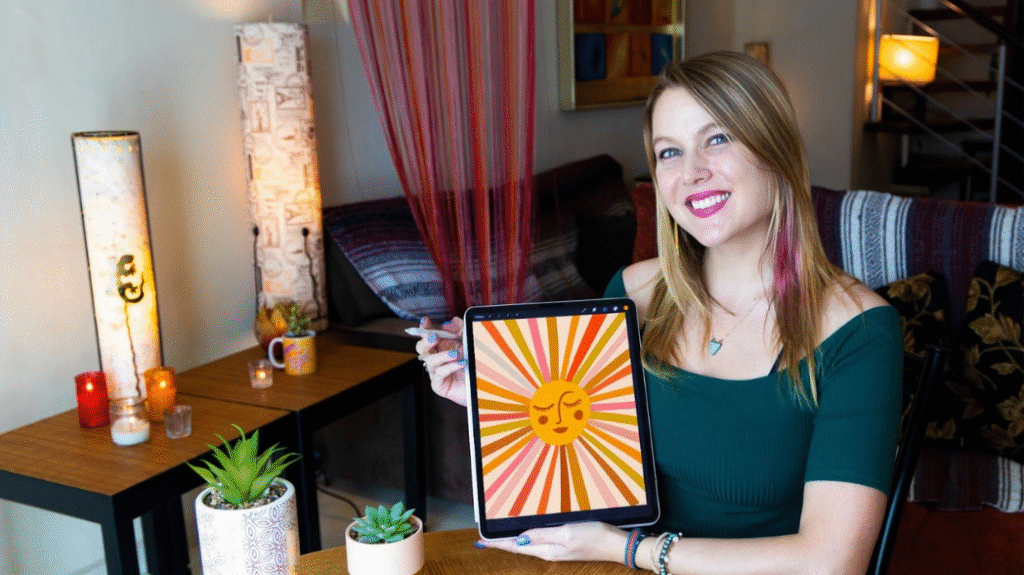In today’s creative economy, artists are no longer limited to canvases and galleries. Many are collaborating with brands to bring their unique art styles to consumer products like apparel, stationery, tech accessories, packaging, and even home decor.
This article is a step-by-step guide for artists who want to partner with brands and see their creative vision brought to life on everyday items. Whether you’re a digital illustrator, painter, or designer, this guide will help you navigate the world of brand collaboration confidently.
Section 1: What Is Brand Collaboration?
A brand collaboration is when a company partners with a creative individual (like an artist) to design or co-create products that reflect both the brand’s identity and the artist’s unique style.
Examples include:
-
A sneaker brand working with a graffiti artist to create a limited-edition shoe
-
A stationery company printing an artist’s patterns on journals
-
A coffee brand using illustrated packaging from an independent artist
This win-win partnership boosts visibility for both the brand and the artist.
Section 2: Why Should Artists Collaborate with Brands?
✅ 1. Visibility and Reach
Your work can appear in stores, websites, and ads — helping you reach new audiences.
✅ 2. Passive Income
Many brand deals involve licensing, meaning you earn from every item sold.
✅ 3. Portfolio Expansion
Collaborating with brands adds real-world projects to your portfolio.
✅ 4. Product Exposure
Imagine your art on T-shirts, mugs, backpacks, or mobile covers — products people use daily.
✅ 5. Credibility
Association with a known brand can boost your professional reputation.
Section 3: What Kind of Art Works for Products?
Not every art style fits every product — but every art style fits some product.
🎨 Styles that commonly work well:
-
Minimalist illustrations → apparel, tech accessories
-
Bold, colorful art → packaging, wall prints, décor
-
Typography or hand lettering → notebooks, mugs, tote bags
-
Nature-inspired art → eco-friendly brands, skincare
-
Cute/cartoonish designs → children’s items, toys, planners
Match your art with products that align with its mood, theme, and audience.
Section 4: How to Prepare for a Brand Collaboration
Before reaching out to any brand, be prepared:
🗂️ 1. Build a Strong Portfolio
Include high-quality images of your work, especially mockups of your art on products.
🌐 2. Create a Professional Website or Page
Showcase your style, contact info, and case studies (if any).
🧾 3. Know Your Style
Brands love clarity. What makes your art unique? Who does it appeal to?
🛍️ 4. Try Mock Product Designs
Use tools like Canva, Placeit, or Photoshop to put your art on items like T-shirts, phone cases, etc.
Section 5: How to Approach Brands
You don’t have to wait for brands to find you. You can reach out strategically.
📧 Cold Email Pitch:
Keep it short, professional, and focused:
-
Introduce yourself
-
Briefly explain your style
-
Mention how your work can add value
-
Attach/link your portfolio
-
Suggest a collaboration idea
Example
Hi [Brand Name], I’m [Your Name], an illustrator with a bold, playful style. I believe my art would pair beautifully with your eco-friendly journals. Would you be open to discussing a limited-edition collection? Portfolio attached below.
📱 DMs on Instagram
Brands are active on social — send a friendly message or tag them in relevant posts.
Section 6: Licensing vs. Commissioned Work
There are generally two ways your art is used in collaborations:
🔄 1. Licensing
You allow the brand to use your art for a period of time or a specific product. You retain ownership and usually earn royalties.
✍️ 2. Commissioned Work
The brand hires you to create custom designs. They usually own the final artwork, and you’re paid a flat fee.
💡 Tip: Always sign a contract. Clarify usage rights, payments, timelines, and credit.
Section 7: Popular Products You Can Design
-
Clothing (T-shirts, hoodies)
-
Phone cases
-
Journals & notebooks
-
Packaging (tea boxes, skincare, tech products)
-
Wall art & posters
-
Bags & pouches
-
Stickers
-
Mugs & water bottles
-
Pillows & bedding
The key is to keep your art flexible and adaptable to different product surfaces.
Section 8: How to Protect Your Work
Before sharing your designs:
-
📄 Watermark your images
-
📝 Use contracts or licensing agreements
-
✅ Register your art if possible (copyright)
-
💼 Work with trusted platforms or agents if you’re unsure .Avoid giving full rights unless you’re paid a premium price.
Section 9: Examples of Artist-Brand Collaborations
-
Lisa Congdon – Collaborated with Chronicle Books, Target
-
James Jean – Worked with Prada and Apple
-
Furry Little Peach (Sha’an d’Anthes) – Illustrated for Casetify, Lush
-
Murugiah – Applied psychedelic art to skateboards and clothing
Even small brands — like handmade soap makers, Etsy stores, or local fashion brands — are open to collabs.
Section 10: Growing Through Collaborations
Once you’ve done one collab, you can:
-
📢 Share the results on social media
-
🧾 Add it to your portfolio
-
🌱 Attract new clients organically
-
🛒 Even launch your own product line
Many artists eventually use their experience to launch personal brands or merchandise stores.
Conclusion
Brand collaborations open new doors for artists — creatively and financially. Whether you’re a beginner or a pro, the key is to be clear in your style, confident in your pitch, and professional in your communication.
You don’t need to be famous — you just need to be ready. Start with small brands, create mockups, and let your art tell its story through everyday products.
